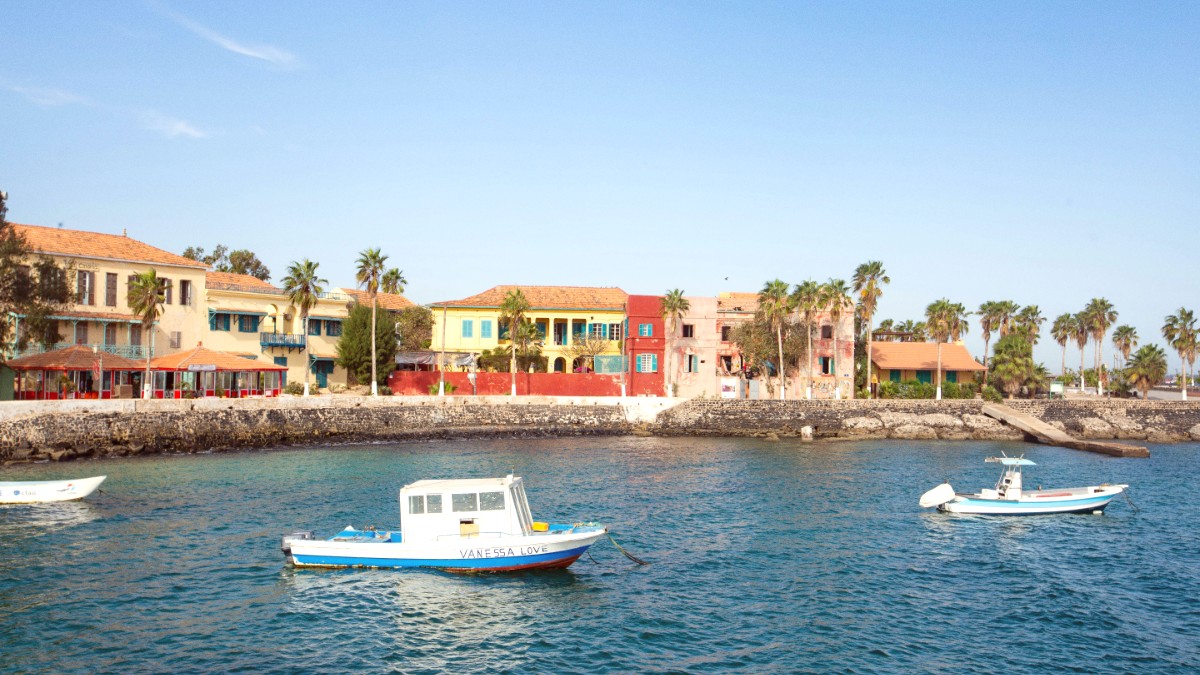
Senegal
Senegalese cuisine absorbed influences from French, North African, and Portuguese culinary traditions over centuries, integrating them with strong local ingredients and cooking methods. This blend created a distinct and celebrated culinary identity.
Rice a staple, accompanying most dishes, reflecting its widespread availability. The Atlantic coast an abundance of fresh fish, making seafood a prominent feature in many meals.
Meals often communally from a large shared platter placed on the floor or a low table. This togetherness.
If you eat with your hands, always use your right hand. The left hand traditionally unclean.
Hosts often water to guests for washing hands before and after meals, a common courtesy.
The national dish of Senegal. A flavorful medley of fish (often thieboudienne fish or thiof), rice, and a rich tomato sauce, slow-cooked with various vegetables.
Widely available in local restaurants and street food stalls.
Chicken or fish marinated in lemon juice, onions, and mustard (Dijon or local senf), then stewed until tender and served over white rice.
Found in almost every local eatery.
A rich, savory stew meat (often beef or lamb) cooked in a thick peanut butter sauce with vegetables like carrots, potatoes, and sweet potatoes. Served with rice.
A hearty and comforting meal.
Stalls specializing in grilled meat, typically lamb, beef, or chicken. The meat often with raw onions and a spicy mustard sauce, sometimes alongside a baguette.
Crispy fried fish fritters, often with a spicy dipping sauce. A popular snack.
Concentrated in the upscale Almadies and Plateau districts. These restaurants refined Senegalese cuisine, often a modern twist, alongside international options (French, Lebanese, Asian fusion). Expect higher prices and a more formal ambiance.
Abundant throughout Dakar, specifically in Plateau, Fann, and Almadies. These establishments a good balance of quality, ambiance, and price.
Found everywhere, especially around major markets (Sandaga, Tilène) and busy streets. For authentic, inexpensive, and quick meals.
Dakar a growing number of restaurants international cuisines, including Lebanese (very popular), French, Italian, Chinese, and other Asian options.
These prevalent in areas a larger expat community like Almadies and Fann.
You find a variety of global flavors readily available for a diverse dining experience.
Many choices in Almadies and Fann.
Specify "sans viande" or "sans poisson."
Senegal is a Muslim-majority country; most meat is halal.
Rice is a staple, naturally gluten-free.
Peanuts are prevalent; extreme caution.
Peanuts prevalent in Senegalese cuisine, especially in Mafe sauce. Individuals severe peanut allergies must extreme caution and communicate their allergy clearly.
Direct communication is .
Rice a staple and naturally gluten-free, many dishes suitable (e.g., Thieboudienne or Yassa with rice). Cross-contamination a risk in smaller establishments.
Cross-contamination is a risk.
Senegal is a Muslim-majority country, meaning most meat served is halal.
During Ramadan, special dishes and sweets prepared for iftar (breaking fast) in the evenings.
Some hotels or specialized tour operators in Dakar Senegalese cooking classes. These a hands-on opportunity to learn to traditional dishes like Thieboudienne or Yassa.
Food tours explore local markets and street food scenes, guided tastings and insights into the history and cultural significance of Senegalese cuisine.
Excursions to nearby villages (e.g., Toubab Dialaw, Joal-Fadiouth) direct community interaction, homestays, and insights into rural Senegalese life and traditions.
Fish, rice, and vegetables stewed in tomato sauce
Typical Cost: 3,000-8,000 XOF
Chicken marinated in lemon, onions, mustard, served with rice
Typical Cost: 3,000-8,000 XOF
Traditional dessert from steamed millet couscous mixed with sweetened yogurt, sugar, and sometimes dried fruits or spices like nutmeg.
Dakar an abundance of fresh, ripe tropical fruits in season, mangoes, papayas, bananas, and pineapples. Enjoy them fresh from local markets.
Fresh baguettes filled with grilled meat, fried eggs, or vegetable omelets. Fataya: Deep-fried pastries filled with seasoned meat or fish. Pastels: Similar to fataya, often smaller, served as an appetizer.
Dakar's diverse population a wide representation of Senegalese culinary styles. You find everything from simple, traditional "dibiteries" (grilled meat stalls) to more refined restaurants contemporary interpretations of classic dishes.